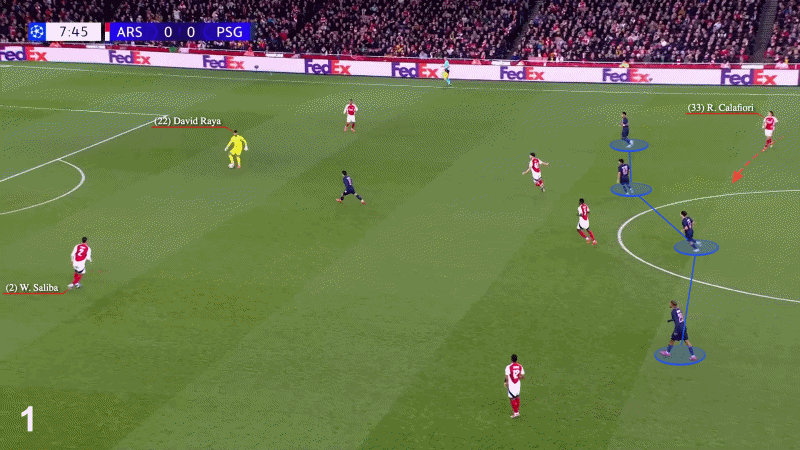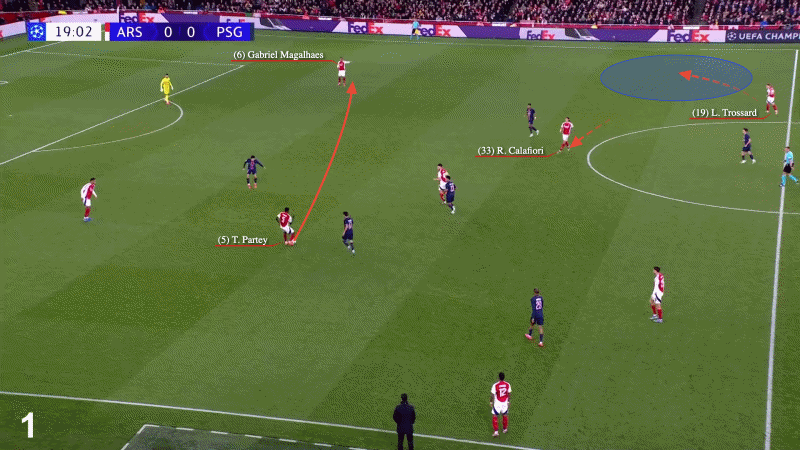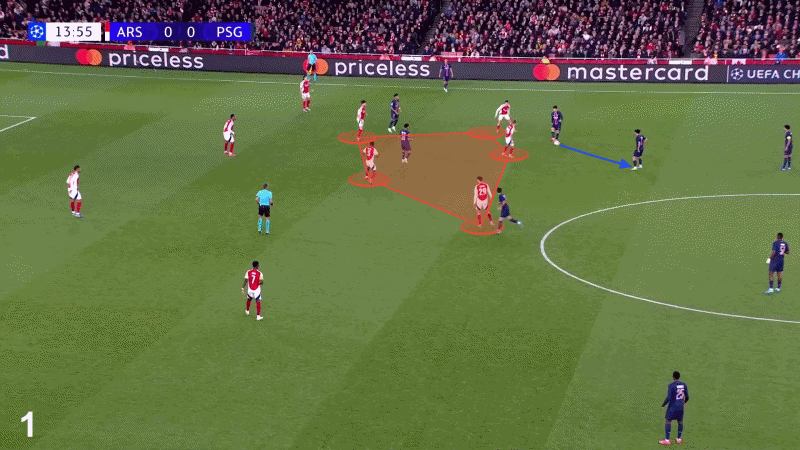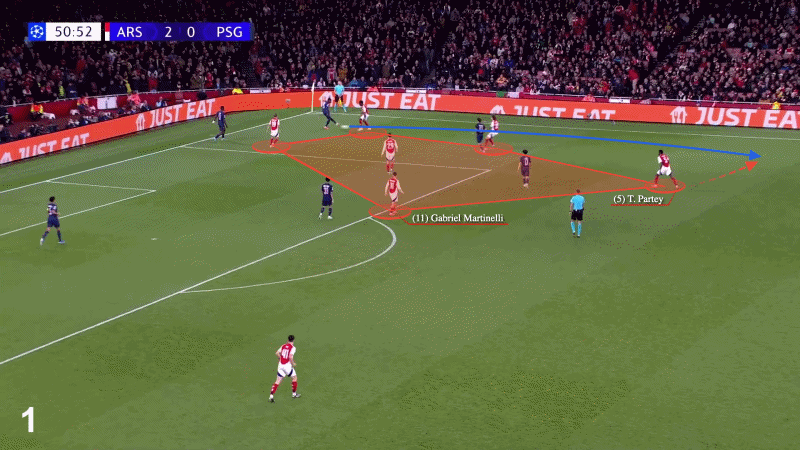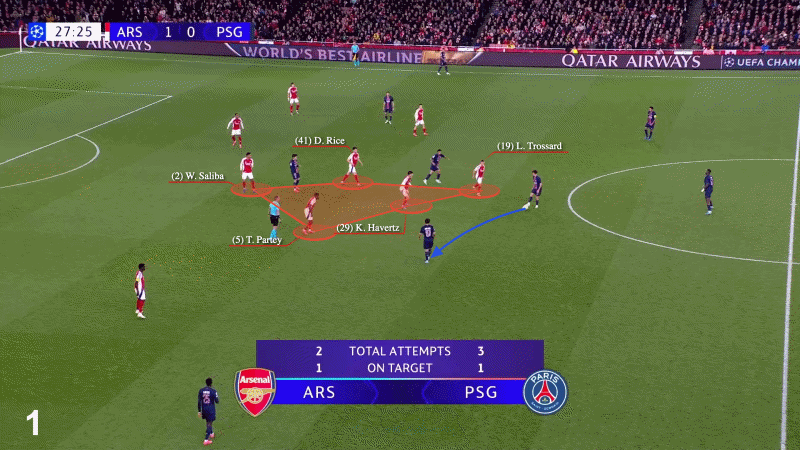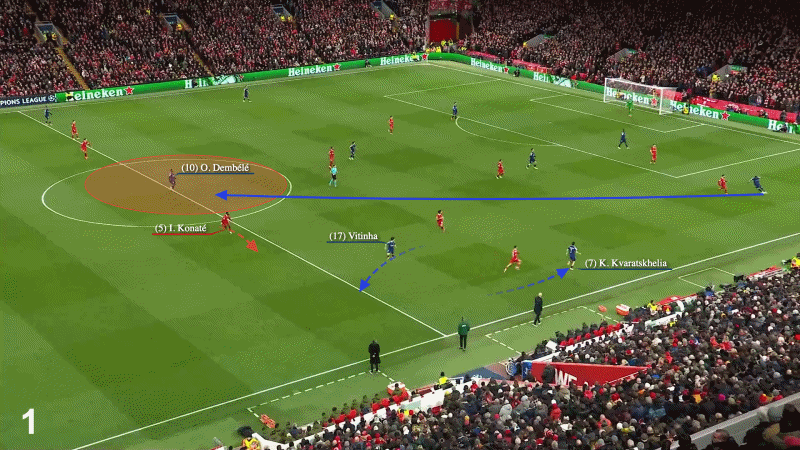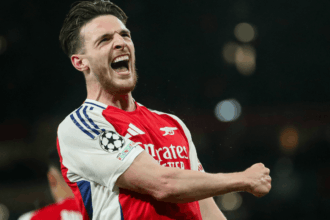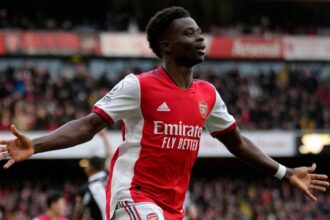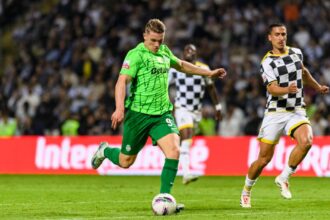Since Arsenal and Paris Saint-Germain won their Champions League quarter-finals, the narrative has been that Mikel Arteta’s side will face a much-changed PSG in the semi-finals to the one they beat 2-0 in the league phase back in October.
And while that is true for the Parisians — perhaps the most exciting team left in the competition — Arsenal, in their first Champions League semi-final for 16 years, will be a different proposition too. Both have matured throughout their European campaigns.
Here, before Tuesday’s semi-final first leg at the Emirates, we look at what’s changed since their first meeting.
When asked on Monday about that defeat at the Emirates, Luis Enrique said in his pre-match press conference: “It was the first of October. Maybe eight months ago. There is a huge difference and we’re better now.
“In the league, we had the most intense group phase and now we’re in the semi-finals after playing games that could have been finals. It was positive because we had to pull our socks up and our team is very complete. Our next objective is to rewrite history.”
Advertisement
In that October match, PSG were without Ousmane Dembele, who has scored 32 and assisted 11 goals this season. Luis Enrique left the France international out of the squad for disciplinary reasons as he “did not comply with the expectations of the team” after a 3-1 Ligue 1 win over Rennes. There was no personal issue between coach and player, with Dembele reintegrated for their next game, but his absence underlined the head coach’s desire “to create a team”.
Without Dembele, Desire Doue made his first Champions League start and was not massively helped by Lee Kang-in starting up front.
Yet Arsenal also had a major absentee in Martin Odegaard, who was weeks into a two-month layoff with an ankle injury. Odegaard’s was the first of many medium-to-long-term injuries that have plagued Arsenal’s season, and forced Arteta to adapt. This was the manager’s third time using Leandro Trossard and Kai Havertz up front in a 4-4-2 this season — a game-changing dynamic with the addition of Riccardo Calafiori at left-back.
Myles Lewis-Skelly, who was not the regular starter he is now, made his Champions League debut in this game as a 90th-minute substitute, but the focus was on Calafiori as a summer signing.
Making just his fourth Arsenal start, the Italy defender impressed with his off-the-ball movement. Early on, he was moving into midfield as Trossard drifted into the space he vacated out wide.
Trossard was then the link between defence and attack before the ball was rolled into Calafiori advancing at the PSG defence, where he laid the ball onto an open Bukayo Saka…
PSG could not deal with the movements of both Calafiori and Trossard, which gave Arsenal a great avenue up the pitch.
Their first goal came from these opposite movements in deeper areas freeing Trossard again. This time, he rode a challenge before cutting onto his right foot, throwing in a customary feint, and crossing for Havertz to finish.
Whether these moments can be replicated with Lewis-Skelly, or Calafiori if he returns to fitness, may be one of the most interesting aspects of this semi-final.
Going into this game, PSG have the highest percentage of high-intensity pressures (87 per cent of their pressures being high-intensity) in the Champions League this season, while Joao Neves is the player with the most high–intensity pressures (715).
Advertisement
These numbers should not be a major surprise considering the man-to-man approach PSG have taken in the knockout stages. The question for Arsenal will be whether they can move the ball quickly and effectively enough under that pressure. William Saliba’s recent mistakes will need addressing, but Lewis-Skelly’s press resistance and Declan Rice’s running with and without the ball tend to fare well against teams who try to be aggressive.
Arsenal’s second goal in the October match came from a Saka free kick, which bounced through bodies and past Gianluigi Donnarumma.
The goals were not the only difference between the sides. PSG hit the post twice, but on the whole, Arsenal’s defence was compact, sturdy and intense. Part of what helped Arsenal dominate was how the respective midfields were set up. Arteta had Thomas Partey and Rice aided by Trossard and Havertz, while PSG’s midfield included 19-year-old Warren Zaire-Emery, who has started four of 12 Champions League games since, alongside Neves and Vitinha.
In the knockout stages, PSG’s midfield setup has had Fabian Ruiz in place of Zaire-Emery, which has helped them dominate games and progress the ball. They often appeared lost for ideas for how to penetrate Arsenal at the Emirates, with the sequence of play below just one example of Arteta’s side forcing them from the middle third back to their defensive one.
PSG had possession for about 90 seconds, but did not do anything of value, with Saliba as high as Trossard to force them back at one point…
Arsenal continued to show this intensity throughout the second half too, ending the game having won possession in the final third more times than in any Champions League game this season (nine).
The best example of how they created those situations came six minutes into the second half, as they lured PSG into the corner to force a hopeful ball up the touchline.
Partey intercepted and played the ball to Saka. Two passes later, and Gabriel Martinelli, who started the passage cutting off a central passing option, ends it by volleying at goal.
Now, however, Ruiz’s presence in midfield has allowed Neves to drop deeper and dictate play.
This also frees up space for PSG’s full-backs to push higher upfield, which is one theme that remains consistent with the first meeting between these sides. Both Achraf Hakimi and Nuno Mendes scored in their quarter-final win over Aston Villa and were PSG’s most threatening assets from open play at the Emirates.
Mendes hit the post (below) after Arsenal initially did well to close gaps centrally but failed to get across to stop a one-two between himself and Bradley Barcola — a passage Arteta seemed to know was coming…
Hakimi then troubled David Raya minutes later after breezing past Calafiori on a fast break down PSG’s right flank.
Ensuring Arsenal deal with PSG’s wide threats will be essential in both semi-final legs. They defended incredibly well as a unit at the Bernabeu.
PSG have four players averaging two or more completed dribbles per 90 in the Champions League this season in Doue (3.1), Khvicha Kvaratskhelia (2.7), Barcola (2.6), and Dembele (2.2). Their team total of 190 completed dribbles is the most in a single Champions League campaign since Barcelona in 2014–15 (238), who were also managed by Luis Enrique.
Advertisement
They carry a much heavier punch than they showed in their passive performance at the Emirates, and the return of Dembele has added to that. The 27-year-old, adept off both feet, has been used as a false nine to great effect throughout the knockout stages.
He caused particular problems for Liverpool in their last-16 second leg at Anfield, constantly dropping into deeper areas. That movement, alongside the fluidity of PSG’s midfield and the pace of Barcola and Kvaratskhelia, was too much for Arne Slot’s side.
These elements could be seen in Dembele’s goal, which levelled the tie…
PSG had built on a strong first-leg performance where their 12 shots at goal and three big chances were the most of any Liverpool opponent in the first half this season. Liverpool’s 29.6 per cent possession was also their lowest in any game since the start of the 2021-22 season.
They were similarly imposing in their quarter-final first leg win over Aston Villa, before benefiting from counterattacks in their second leg defeat at Villa Park. PSG going through as 5-4 winners despite being 5-1 up at one stage in the tie will give Arsenal encouragement, but so will their own recent developments.
Arsenal’s 4-0 win over Ipswich Town felt more like the dress rehearsal for PSG than the 2-2 draw against Crystal Palace, with more regulars starting at Portman Road. That afternoon provided sparks of life on their right flank, with the added dynamic of Trossard drifting right rather than left, and Mikel Merino pushing up to fill the centre-forward void.
With Partey suspended, that feels like a more likely solution for Arteta rather than reverting to the Odegaard-less 4-4-2.
Trossard’s movement to the right continued against Palace, and could be an intelligent way to reverse the themes from October’s match-up while still benefiting. If not, the Belgian could still pull left to exploit spaces on that side when Lewis-Skelly inverts into midfield, as he did so well against Real Madrid. They also have the addition of short-corner routines that could be added to the mix if they want to catch Enrique’s side off-guard.
Advertisement
Unbeaten in their last eight Champions League games, Arsenal will be confident heading into the semi-finals. Arteta’s side have been ahead for 53 per cent of their match-time in the Champions League this season, more than any other team, while Inter’s one per cent spent trailing is the only better record than their six per cent.
Arsenal made a statement with their first-leg performance at home against Real Madrid, and considering the exuberance of PSG, they may need an even bigger one this time.
(Top photo: Shaun Botterill/Getty Images)


